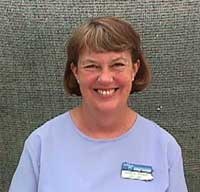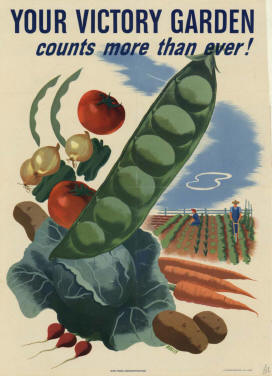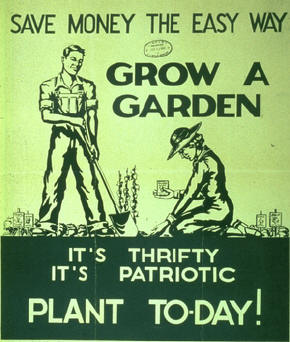Sue Williams
Adams County Master Gardener
 "The first day of spring is one thing, and the first spring day is another. The difference between them is sometimes as great as a month." (Henry Van Dyke). To wit- I began this article on the first day of
spring when the warmer temperature and longer day lulled me into thinking that it was finally spring. Today, a week later, I am completing this master gardener article while looking out at the thermometer in the teens and seeing frost on the lawn and my daffodils. But gardeners are the ultimate optimists. What could be
more an act of faith than planting a seed? I've just planted Buttercrunch, Black Seeded Simpson and a gourmet mix of lettuce seeds in the cold frame, and sowed sugar snap peas in what I hope will be a successful new (old) square foot garden design this year. Remember Mel Bartholomew's popular book Square Foot Gardening
based on squares instead of rows? What is old is new again, and besides, gardeners are constantly looking for change and a challenge.
"The first day of spring is one thing, and the first spring day is another. The difference between them is sometimes as great as a month." (Henry Van Dyke). To wit- I began this article on the first day of
spring when the warmer temperature and longer day lulled me into thinking that it was finally spring. Today, a week later, I am completing this master gardener article while looking out at the thermometer in the teens and seeing frost on the lawn and my daffodils. But gardeners are the ultimate optimists. What could be
more an act of faith than planting a seed? I've just planted Buttercrunch, Black Seeded Simpson and a gourmet mix of lettuce seeds in the cold frame, and sowed sugar snap peas in what I hope will be a successful new (old) square foot garden design this year. Remember Mel Bartholomew's popular book Square Foot Gardening
based on squares instead of rows? What is old is new again, and besides, gardeners are constantly looking for change and a challenge.
White House Vegetable Garden
Also on the first day of spring, March 20, 2009, 23 fifth graders from Bancroft Elementary School in Washington, DC joined Michelle Obama on the South Lawn of the White House to break ground on an 1100 square foot organic kitchen garden. (They are not calling it a "Victory Garden"- more about that
later). The actual design for the herbs, vegetables and flowers can be found on a website for a group that has been working for more than a year to promote the "Eat the View" project on the South Lawn of the White House. (www.info.kitchengardening.org) The family-size garden cost about $200 to install. A young chef named
Sam Cass is the White House "farmer" who has a history of activism and a love for fresh food. I think the smartest thing about this project is that Michelle Obama decided to partner with an elementary school that has had a garden since 2001 to teach students to plant, harvest, and cook the vegetables, berries and herbs.
They will work in the kitchens with the professional chefs. "How cool is that?", remarked Michelle to the students. Indeed. The Obamas will feed on Mexican food with cilantro, tomatillos and hot peppers. There will be spinach, chard, collards, and kale. Berries will provide dessert and there will even be two bee hives for
honey, provided and cared for by a White House carpenter, Charlie Brandts, who is a beekeeper. And yes, Roy, they will use White House compost for the raised beds, but I bet it's not any better than the compost in your bins in the backyard and at the Ag Center Trial Gardens!
 Return of the Victory Garden?
Return of the Victory Garden?
Many of us remember the World War II-era Victory Gardens and the popular TV series "Crockett's Victory Garden." It took a time of national emergency to bring citizens back to the earth. Americans were encouraged to grow gardens to help support the war effort. Millions of people planted gardens. In
1943, over 20 million households set up gardens supplying more than 40% of the nation's produce (from Eating for Victory by Amy Bently, 1998). Colorful posters, Department of Agriculture pamphlets and State Extension Service classes promoted gardening as a civic virtue. First Lady Eleanor Roosevelt's White House Victory
Garden promoted the effort. The goal was to produce enough vegetables through the summer for the immediate family and neighbors. Excess produce was canned and preserved for the winter and early spring. My husband Frank's stories about his family's Victory Garden in Garden City, NY and Brown University were full of facts
and a bit'o fiction as he, his dad and brother planted and harvested Golden Bantam Corn, Bush Blue Lake Beans and Beefsteak Tomatoes- now heirloom vegetables still available. My own family planted a large vegetable garden where I first learned about self-sufficiency, weeding, and putting up literally hundreds of jars of
tomato sauce, beans and so much more for the winter feasting.
 Now, in our dismal economic climate, a new victory garden movement has gained interest for a variety of reasons- economic, environmental and political. Gardeners want to lessen their reliance on imported foods, save on grocery bills, and
teach their children and grandchildren the benefits and joys of backyard gardening. This current movement may have the urgency of the victory gardens of the 1940's. This year I have found some seed companies packaging "victory garden seeds." In fact, there is such a demand for these that companies are now out of seeds but
promise more soon. Green Thumb classes offered by the Master Gardeners of Adams County have been well attended. The Trial Garden Committee will offer advice, information and tours throughout June, July and August at the Ag Center in Gettysburg.
Now, in our dismal economic climate, a new victory garden movement has gained interest for a variety of reasons- economic, environmental and political. Gardeners want to lessen their reliance on imported foods, save on grocery bills, and
teach their children and grandchildren the benefits and joys of backyard gardening. This current movement may have the urgency of the victory gardens of the 1940's. This year I have found some seed companies packaging "victory garden seeds." In fact, there is such a demand for these that companies are now out of seeds but
promise more soon. Green Thumb classes offered by the Master Gardeners of Adams County have been well attended. The Trial Garden Committee will offer advice, information and tours throughout June, July and August at the Ag Center in Gettysburg.
My Favorite Cookbook
My all-time favorite vegetable cookbook is The Victory Garden Cookbook by Marion Morash (Alfred A Knopf, New York, 1982). It is an extension of the television gardening series with 800 recipes and essential gardening information. This A-Z cookbook, asparagus to zucchini, has wonderful photos and
Marion's personal narrative is priceless. "It took me years to realize how rare and precious a flourishing asparagus bed could be." Or, "I like to prepare snap beans simply. Before the beans reach pencil-thin size, I harvest them and drop into boiling water, drain, and coat them with butter."
Read other articles on growing herbs or vegetables
Read other articles by Sue Williams